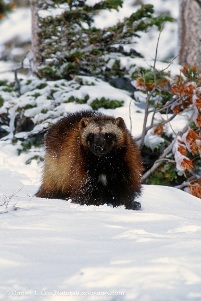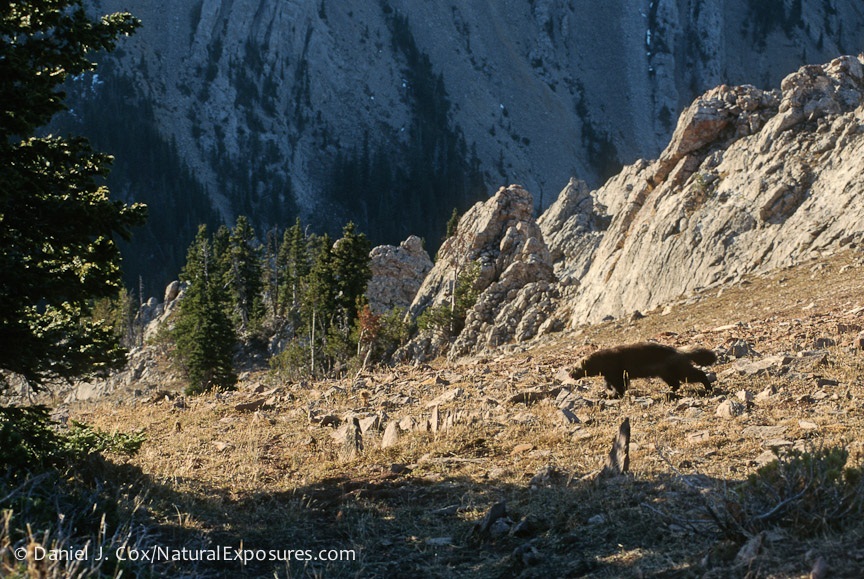Wolverine
Gulo gulo
Trevor Fink
Habitat

Climate
The wolverine inhabits both the tundra and boreal biomes.
They prefer a habitat that stays snow-covered throughout the winter
because they are so adequately adapted to hunting in the snow. With
large paws and long claws, the wolverine is able to walk across thick
snow covering. This adaptation makes the wolverine an avid hunter during
even the harshest winter. Since the wolverine is so well shaped for the
cold climate, they are found primarily close to and above the arctic
circle.
Geography
Wolverines are found in holarctic environments--referring to
the northern continents. Gulo gulo can be found in western
North America (this includes Alaska and Canada), Scandinavia, eastern
Europe, Russia and even Siberia. Wolverines have a very low population
density. Therefore they require a vast range in which to live. However,
as the United States began to populate, the wolverine was pushed out of
the southwestern states and now mostly inhabit Montana and Idaho (Patsy
2009).
When it comes to wolverine dens, a study concluded that it's
not the infrastructure of the den that matters, it's the location of the
den that determines whether a wolverine will find the den suitable. This
study looked at a wide range of factors including different topographic
features and den infrastructure. Researchers noted how wolverines prefer
to be close to the tree line and that the materials of the den was made
of had no noticeable impact on suitability (Broseth 2012).
Wolverines usually will dig a large den into a snow drift
shortly before they are about to give birth. A den into a snow drift
provides a mother wolverine and her new kits with plenty of protection
from the freezing temperature and also predation. Other suitable dens
usually included some sort of vegetative protection or bare rocks.
Astoundingly, it seems that some wolverine dens are re-used by the same
or new wolverine individuals. This evidence possibly indicates that
these den sites are preferred by wolverines (Broseth 2012).
Human Interference
Gulo gulo prefers to be solitary. They usually spend
their time alone, except during the spring which is their mating season.
The wolverine is practically non-tolerant to environmental changes.
Recently, the habitat that the wolverine inhabits has gone under a lot
of human caused environment changes. Where there was once extensive
forests, there is now roads and development impeding on the boreal
biome. Development like this is pushing the wolverine population to
lower numbers.
In the same study mentioned above, it was indicated that
wolverines stay away from areas around roads or with additional human
activity. This is a major find because zoning laws can be implemented
around areas that have known wolverine den sites. That would help
potentially increase the wolverine population because it could lead to
more successful reproduction (Broseth 2012).
To learn more about the life cycle of the Wolverine, click
Reproduction
Go back to my Home Page